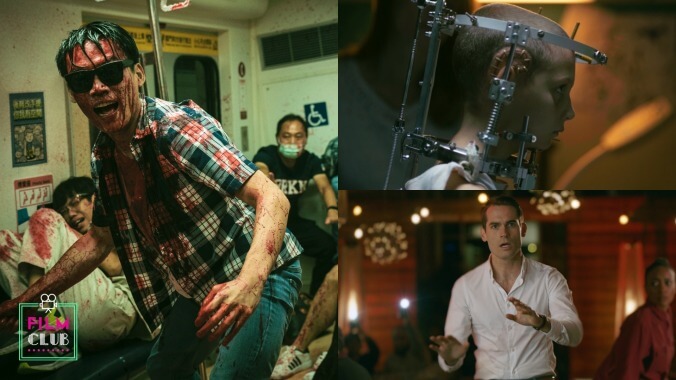Now in its 16th year, Fantastic Fest is probably the biggest and more prominent genre-centric film festival in America. But it offers a lot more than just raw meat and geysers of blood for the midnight-movie crowd. On this week’s episode of Film Club, critics A.A. Dowd and Katie Rife discuss the evolution of this annual destination summit for fans of the weird, the wild, the extreme, and the outrageous. And they take a close look at three of the most prominent selections of the program this year, including an ultra-violent COVID-era zombie movie, the latest character study from a hometown indie-film hero, and the big, controversial winner of another festival across the pond.
Here is an excerpt from Katie Rife’s first look at Mad God, the apocalyptic stop motion film from SFX legend Phil Tippett:
Tippett says that Mad God, an anguished and cynical film, is “a reflection of the absurdity of the world I live in,” which he sees as a decrepit empire of base cruelty and greed. That’s in stark contrast to the generous and collaborative way in which it was made, as Tippett Studios invited volunteers to come in and work on the film in exchange for hands-on lessons from the master. These included students from San Francisco art schools as well as working professionals like Oscar-winning sound designer Richard Beggs, who designed the sound for Mad God for free. (One volunteer was hired on at Tippett Studios after displaying a gift for stop-motion animation, as Tippett proudly notes in the doc.) A Kickstarter campaign brought it to completion, a group effort whose spirit of community is in no way reflected in this film.
The film was animated with what Tippett, who grew up obsessed with King Kong and the films of Ray Harryhausen, calls an “old school” approach. In practical terms, this means that the animators used traditional stop motion animation, where a model is moved by hand and photographed in a series of still frames, rather than the machine-assisted “go-motion” technique or a blend of stop motion and CGI. Ironically enough, it was Tippett who pioneered both of the latter methods. So there’s a repudiation of the self in his stubborn insistence on doing things the way they were done before he came on the scene, as well as a desire to preserve the handcrafted origins of an increasingly digital field.
Listen to the podcast above, subscribe on Apple Podcasts, and give us a five-star rating to help other listeners find us. And while you’re there, check out The A.V. Club’s other podcasts, Push The Envelope and Dial M For Maple.










![HBO teases new Euphoria, Larry David, and much more in 2026 sizzle reel [Updated]](https://img.pastemagazine.com/wp-content/avuploads/2025/12/12100344/MixCollage-12-Dec-2025-09-56-AM-9137.jpg)






























